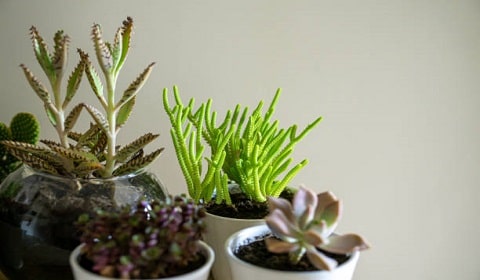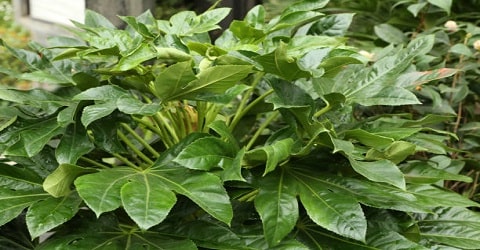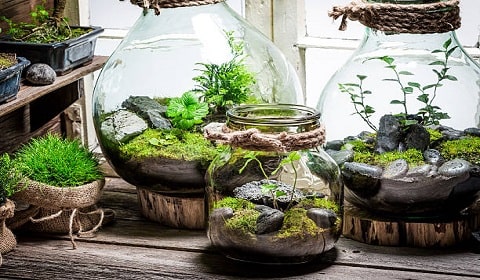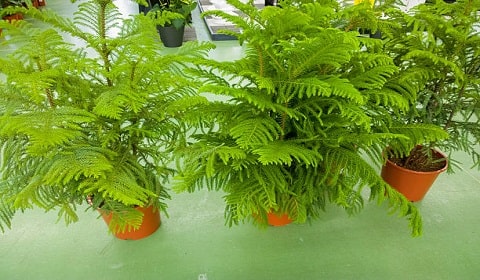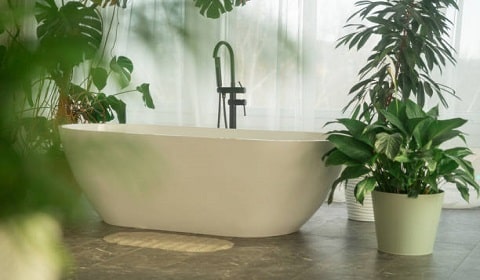Unusual houseplants offer a delightful divergence from the ordinary, often presenting intriguing variations of familiar favorites like philodendron or snake plant. With captivating leaf shapes, striking color schemes, and distinctive growth patterns, these rare cultivars stand out.
Surprisingly, despite their exotic appearances, they demand no more care than typical houseplants. With minimal attention to their basic needs, these uncommon gems flourish indoors, making them an enticing addition to any plant enthusiast’s collection.
Unusual Houseplants
Discover unique houseplants with diverse shapes, colors, and flowers. Despite their distinctiveness, they’re as easy to nurture indoors as popular varieties.
Delight in cultivating these 20 captivating plants, each offering an enjoyable growing experience. Explore the joy of watching them thrive in your home environment.
Table of Contents
1. Desert Rose
Botanical Name: Adenium obesum
Leaf Color Varieties: Green, sometimes with a reddish tinge.
Average Size: Compact shrub, 3-10 feet tall, with thick succulent stems.
Water Requirement: Drought-tolerant, prefers infrequent watering, allow soil to dry between waterings.
Distinctive Feature: Showy, trumpet-shaped flowers in shades of pink, red, or white.
Humidity: Thrives in low to moderate humidity (20-40%).
The Desert Rose, known for its striking appearance and symbolic resilience, is a captivating addition to any home. Beyond its aesthetic charm, this plant offers health benefits such as air purification and stress reduction. Placing it in the bathroom enhances moisture levels, aiding its growth. Unusual houseplants like the Desert Rose infuse spaces with tranquility and beauty while contributing to overall well-being.
Read More: Beautiful Indoor Plants for East-Facing Windows
2. Banana Shrub
Botanical Name: Magnolia figo
Leaf Color Varieties: Glossy green with brown undersides.
Average Size: Small evergreen shrub, 6-10 feet tall and wide.
Water Requirement: Regular watering, keep soil consistently moist but not waterlogged.
Distinctive Feature: Fragrant, creamy yellow flowers with a banana-like scent.
Humidity: Prefers moderate humidity (40-60%).
The Banana Shrub, a captivating addition to any household, boasts more than just ornamental value. Its lush foliage not only enhances indoor aesthetics but also purifies air, promoting a healthier environment. With its natural aroma, it transforms bathrooms into serene sanctuaries, offering a touch of tropical allure. Unusual houseplants like the Banana Shrub provide both beauty and wellness benefits effortlessly.
Read More: Best Small Indoor House Plants
3. Climbing Sea Onion
Botanical Name: Bowiea volubilis
Leaf Color Varieties: Bright green, cylindrical leaves.
Average Size: Vine-like growth, can reach up to 6 feet in length.
Water Requirement: Infrequent watering, allow soil to dry between waterings.
Distinctive Feature: Twisting, curling stems that climb or trail gracefully.
Humidity: Tolerates low to moderate humidity (30-50%).
Climbing Sea Onion, a unique addition to any home, not only enhances aesthetics but also purifies indoor air. Its remarkable ability to thrive in bathroom environments makes it ideal for keeping there. The plant offers health benefits by absorbing toxins and releasing oxygen. Unusual houseplants like the Climbing Sea Onion bring beauty and wellness effortlessly into our lives.
Read More: Best Bright Light Indoor Plants
4. Club Moss
Botanical Name: Selaginella spp.
Leaf Color Varieties: Bright green, small scale-like leaves.
Average Size: Low-growing ground cover, typically under 12 inches tall.
Water Requirement: Keep soil consistently moist, but not waterlogged.
Distinctive Feature: Dense, carpet-like growth resembling miniature ferns.
Humidity: Requires high humidity (50-70%).
Club moss, a fascinating plant known for its miniature yet lush appearance, holds significance both aesthetically and medicinally. Despite its diminutive size, it packs a punch in health benefits, aiding in respiratory health and reducing stress. Its resilience makes it an ideal addition to bathroom decor, thriving in humid environments. These unusual houseplants bring a touch of greenery and wellness into daily routines.
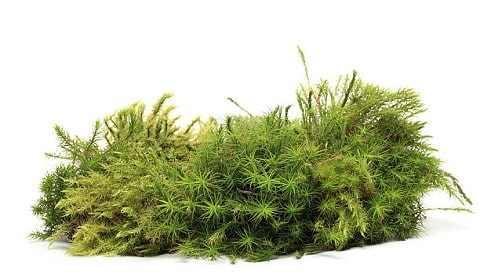
5. Coffee Plant
Botanical Name: Coffea arabica
Leaf Color Varieties: Dark green, glossy leaves.
Average Size: Small tree or shrub, 6-15 feet tall when grown indoors.
Water Requirement: Regular watering, keep soil consistently moist but not waterlogged.
Distinctive Feature: Produces aromatic white flowers and red berries containing coffee beans.
Humidity: Prefers moderate humidity (40-60%).
The coffee plant, known for its aromatic beans, holds significant cultural and economic importance worldwide. Beyond its rich flavor, coffee offers numerous health benefits, including increased alertness and reduced risk of certain diseases. Surprisingly, it thrives in bathrooms, making it one of the most unusual houseplants cherished for its adaptability and lush foliage.
Read More: Best Low-Light Indoor Plants
6. Lifesaver Plant
Botanical Name: Huernia zebrina
Leaf Color Varieties: Dark green, mottled with lighter green markings.
Average Size: Succulent plant, grows up to 12 inches tall and wide.
Water Requirement: Allow soil to dry between waterings, sparingly in winter.
Distinctive Feature: Unique star-shaped flowers resembling life preservers, often red or yellow.
Humidity: Tolerates low to moderate humidity (30-50%).
The Lifesaver Plant, known for its striking appearance resembling a bundle of red buttons, is more than just a decor piece. Its significance lies in its air-purifying abilities, releasing oxygen at night, enhancing sleep quality. Packed with health benefits like reducing stress and headaches, it finds a perfect spot in bathrooms, enhancing aesthetics and air quality. Truly, it’s among the unusual houseplants worth having.
Read More: Best Indoor Hanging Plants
7. Cement Leaf Plant
Botanical Name: Kalanchoe pinnata
Leaf Color Varieties: Gray-green, fleshy leaves with scalloped edges.
Average Size: Compact succulent, 1-3 feet tall and wide.
Water Requirement: Drought-tolerant, water sparingly, allow soil to dry between waterings.
Distinctive Feature: Thick, waxy leaves that store water, capable of propagating from leaf cuttings.
Humidity: Tolerates low humidity (20-40%).
The Cement Leaf Plant, one of the unusual houseplants, adds a touch of nature’s elegance to any bathroom. Beyond its aesthetic appeal, it purifies indoor air, promoting a healthier environment. With its ability to thrive in low light and high humidity, it’s the perfect green companion for bathroom spaces, offering both beauty and wellness benefits.
Read More: Small Garden Design Ideas
8. Sensitive Plant
Botanical Name: Mimosa pudica
Leaf Color Varieties: Bright green, fern-like leaves.
Average Size: Low-growing herbaceous plant, reaches up to 18 inches in height.
Water Requirement: Regular watering, keep soil consistently moist but not waterlogged.
Distinctive Feature: Leaves fold inward when touched, a defense mechanism against herbivores.
Humidity: Tolerates moderate humidity (40-60%).
The Sensitive Plant, with its delicate fern-like leaves, is not only an unusual houseplant but also a marvel of nature. Its importance lies in its ability to react to touch, making it an intriguing addition to any indoor space. Beyond its ornamental value, this plant offers health benefits by purifying the air, making it an ideal choice for the bathroom where it can thrive in the humid environment while enhancing the ambiance.
9. Bat Flower
Botanical Name: Tacca chantrieri
Leaf Color Varieties: Large, dark green leaves.
Average Size: Herbaceous perennial, grows up to 3 feet tall and wide.
Water Requirement: Regular watering, keep soil consistently moist but not waterlogged.
Distinctive Feature: Unique, bat-shaped black or dark purple flowers with long whiskers.
Humidity: Prefers high humidity (60-80%).
The Bat Flower, known for its striking resemblance to a bat in flight, adds an intriguing touch to any bathroom. As one of the unusual houseplants, its unique appearance sparks conversation and curiosity. Beyond aesthetics, it purifies the air, fostering a healthier environment. Its presence brings a subtle yet impactful botanical charm to daily routines.
10. California Pitcher Plant
Botanical Name: Darlingtonia californica
Leaf Color Varieties: Green with reddish veins.
Average Size: Carnivorous perennial, 1-2 feet tall with pitcher-shaped leaves.
Water Requirement: Keep soil consistently moist, use distilled or rainwater to prevent mineral buildup.
Distinctive Feature: Pitcher-shaped leaves with a hooded lid, attracts and traps insects for nutrition.
Humidity: Prefers moderate humidity (50-70%).
The California Pitcher Plant, renowned for its captivating appearance, serves as more than just an ornamental piece. Its unique pitcher-shaped leaves aid in purifying indoor air, offering health benefits by reducing toxins. Perfect for bathroom settings, these unusual houseplants add a touch of greenery while enhancing the ambiance and air quality simultaneously.
11. Sundew
Botanical Name: Drosera spp.
Leaf Color Varieties: Green with red tentacles.
Average Size: Low-growing carnivorous plant, typically under 6 inches tall.
Water Requirement: Keep soil consistently moist, use distilled or rainwater to prevent mineral buildup.
Distinctive Feature: Sticky glandular hairs on leaves attract, trap, and digest insects.
Humidity: Prefers moderate to high humidity (50-80%).
Sundew, an intriguing carnivorous plant, holds significance as a natural insect control, capturing prey with its sticky tentacles. Beyond its unique role in nature, Sundew offers health benefits through air purification. Its compact size makes it ideal for bathroom shelves, enhancing décor and air quality. Truly, Sundew stands among the unusual houseplants, blending beauty with practicality.
12. Jewel Orchid
Botanical Name: Ludisia discolor
Leaf Color Varieties: Dark green leaves with silver, gold, or maroon veining.
Average Size: Low-growing orchid, typically under 12 inches tall.
Water Requirement: Regular watering, keep soil consistently moist but not waterlogged.
Distinctive Feature: Striking foliage with jewel-like coloration, produces small white flowers.
Humidity: Prefers moderate humidity (50-60%).
The Jewel Orchid, prized for its stunning foliage, serves as more than just a decorative piece. Its leaves possess medicinal properties, promoting respiratory health and reducing stress. Placing it in the bathroom not only enhances aesthetic appeal but also utilizes the humid environment for optimal growth. Truly, these unusual houseplants bring beauty and wellness into our homes effortlessly.
13. Venus Flytrap
Botanical Name: Dionaea muscipula
Leaf Color Varieties: Green with red traps.
Average Size: Carnivorous perennial, typically under 6 inches tall.
Water Requirement: Keep soil consistently moist, use distilled or rainwater to prevent mineral buildup.
Distinctive Feature: Traps insects with hinged, tooth-like structures triggered by touch.
Humidity: Prefers moderate to high humidity (50-70%).
The Venus Flytrap, one of nature’s wonders, serves not only as an intriguing addition to any indoor garden but also as a natural pest controller. Its carnivorous nature helps keep insects at bay, while its air-purifying properties enhance the bathroom environment. Truly, these unusual houseplants bring both fascination and practicality to any space.
14. Cooper’s Haworthia
Botanical Name: Haworthia cooperi
Leaf Color Varieties: Green, translucent leaves with white stripes or spots.
Average Size: Small succulent rosette, usually under 6 inches in diameter.
Water Requirement: Infrequent watering, allow soil to dry between waterings.
Distinctive Feature: Leaves arranged in a rosette pattern, often with window-like translucent areas.
Humidity: Tolerates low to moderate humidity (30-50%).
Cooper’s Haworthia, renowned for its striking appearance and low maintenance, graces bathrooms with elegance. These unusual houseplants not only enhance decor but also purify indoor air, promoting a healthier environment. Their resilience in humid conditions makes them ideal for bathroom settings, offering a refreshing touch of nature amidst daily routines.
15. Living Stones
Botanical Name: Lithops spp.
Leaf Color Varieties: Gray-green, mottled with various patterns and markings.
Average Size: Small succulent, typically under 2 inches tall and wide.
Water Requirement: Drought-tolerant, water sparingly, allow soil to dry completely between waterings.
Distinctive Feature: Mimicry of stones or pebbles, blending in with their surroundings as camouflage.
Humidity: Tolerates low humidity (20-40%).
Living Stones, aptly named for their resemblance to actual stones, are unusual houseplants gaining popularity for their unique appearance and low maintenance. These succulents not only add aesthetic appeal to bathrooms but also thrive in the humid environment, purifying the air and promoting a sense of tranquility. Their presence not only enhances the ambiance but also contributes to overall well-being with their air-purifying qualities.
16. Lavender Scallops
Botanical Name: Kalanchoe fedtschenkoi
Leaf Color Varieties: Bluish-green leaves with scalloped edges.
Average Size: Compact succulent, usually under 12 inches tall and wide.
Water Requirement: Drought-tolerant, water sparingly, allow soil to dry between waterings.
Distinctive Feature: Scalloped edges and purple undersides of leaves, trailing growth habit.
Humidity: Tolerates low humidity (20-40%).
Lavender Scallops, with their vibrant foliage resembling sea shells, are captivating and unusual houseplants that not only add aesthetic charm but also purify indoor air. Renowned for their stress-relieving aroma, they offer health benefits like reducing anxiety and promoting better sleep. Their ideal placement in bathrooms capitalizes on moisture, creating a spa-like atmosphere.
17. Pencil Cactus
Botanical Name: Euphorbia tirucalli
Leaf Color Varieties: Green, cylindrical stems resembling pencils.
Average Size: Succulent shrub or small tree, can grow up to 30 feet tall.
Water Requirement: Drought-tolerant, water sparingly, allow soil to dry between waterings.
Distinctive Feature: Thin, pencil-like stems that grow vertically, often branching profusely.
Humidity: Tolerates low humidity (20-40%).
The Pencil Cactus, a striking succulent, not only adds aesthetic appeal to indoor spaces but also serves as a natural air purifier, promoting better respiratory health. Its resilience and low maintenance make it ideal for bathrooms, where it thrives in humid conditions. Among unusual houseplants, it stands out for its unique charm and health benefits.
18. Parachute Plant
Botanical Name: Ceropegia sandersonii
Leaf Color Varieties: Bright green, heart-shaped leaves.
Average Size: Vine-like growth, can reach up to 3 feet in length.
Water Requirement: Moderate watering, keep soil consistently moist but not waterlogged.
Distinctive Feature: Unique parachute-shaped flowers with a hairy, bulbous base.
Humidity: Tolerates moderate humidity (40-60%).
The Parachute Plant, known for its striking appearance and air-purifying qualities, is among the unusual houseplants gaining popularity. Its broad, glossy leaves not only add a touch of greenery to bathrooms but also thrive in the humid environment, enhancing indoor air quality. Renowned for its health benefits, this plant serves as a charming and practical addition to any home sanctuary.
19. Corkscrew Albuca
Botanical Name: Albuca spiralis
Leaf Color Varieties: Bright green, spiraling leaves.
Average Size: Herbaceous perennial, typically under 12 inches tall.
Water Requirement: Infrequent watering, allow soil to dry between waterings.
Distinctive Feature: Twisting, corkscrew-like leaves emerging from the center of the plant.
Humidity: Tolerates low to moderate humidity (30-50%).
The Corkscrew Albuca, a mesmerizing member of unusual houseplants, not only adds charm to your indoor space but also offers health benefits. Its distinctive spiral leaves purify air, promoting better breathing. Placing it in the bathroom capitalizes on its love for humidity, ensuring a lush, vibrant display while enhancing the room’s ambiance.
20. Variegated Monstera
Botanical Name: Monstera deliciosa ‘Variegata’
Leaf Color Varieties: Variegated green and white, with splits and holes.
Average Size: Large tropical vine, can reach up to 10 feet tall indoors.
Water Requirement: Moderate watering, keep soil consistently moist but not waterlogged.
Distinctive Feature: Large, glossy leaves with irregular white patches and fenestrations.
Humidity: Prefers high humidity (60-80%).
The Variegated Monstera, a striking member of the plant kingdom, not only adds aesthetic charm but also purifies indoor air, promoting a healthier environment. With its unique variegated leaves, it stands out among unusual houseplants. Placing it in a bathroom not only enhances décor but also thrives in the humid conditions, making it an ideal addition to any home sanctuary.
